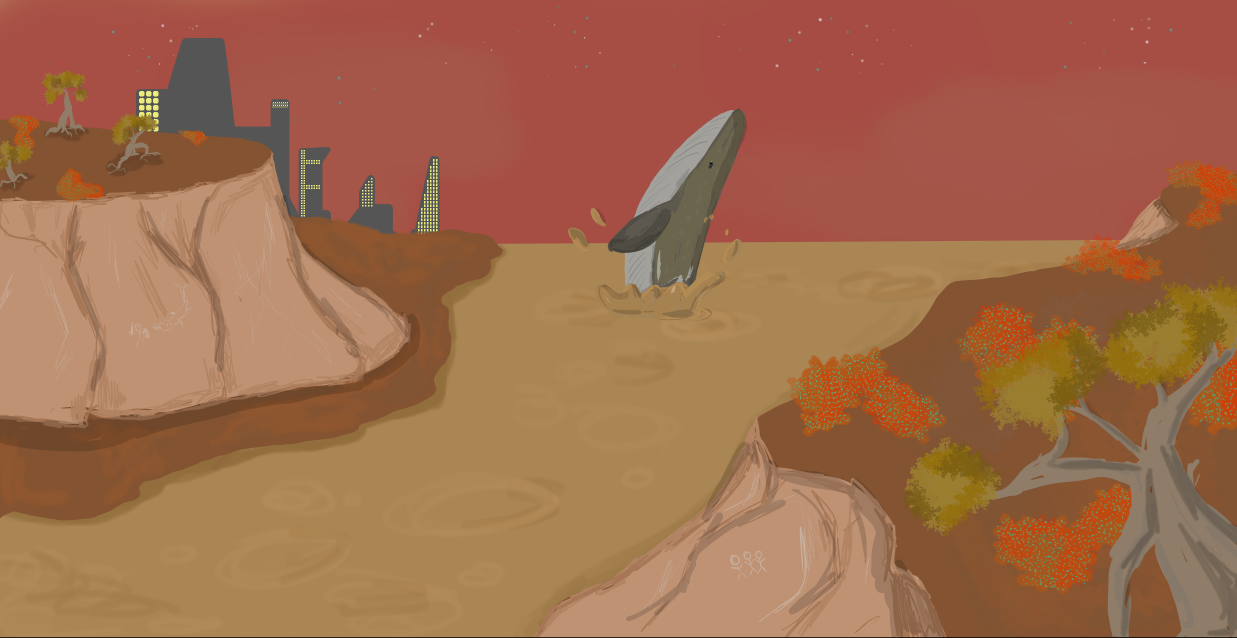Mars
Mars is a planet in the Kinosmo Solar System. It is the fourth planet orbiting the Sun, Aquarius. Mars is home to one sapient species, Martians, who have constructed impressive megacities across the planet.
This volcano originally had no name, until humans of Earth landed a spacecraft on Olympus Mons, leaving a flag in the centre with the name written on. Ever since martians discovered this flag, the name has been used.
Geography
Mars has a vast array of geographical features, from volcanoes three times the height of Earth's highest mountains, to a valley three thousand kilometres long. The North and South Poles are so cold, CO2 has frozen solid, and very little plant life exists there.Olympus Mons
Olympus Mons is the largest volcano on Mars. This shield volcano is over 20 kilometres tall, and 600km wide. The heat from the volcanoes seeping through the ground has brought many species to the area, the top of the dormant volcano coated with plants, hundreds of thousands of animal species roaming the lands.This volcano originally had no name, until humans of Earth landed a spacecraft on Olympus Mons, leaving a flag in the centre with the name written on. Ever since martians discovered this flag, the name has been used.
Poles
The North and South Poles of Mars are the coldest places on the planet, reaching around -200℃ in winters, colder than the freezing point of CO2. Thanks to the temperature, the plant life take in other gases, as well as the animals. The temperatures in the summers are enough to sublimate the CO2, so plants are able to take in CO2 then, and animals can take in oxygen produced by said plants. This ability to take in several different gases to function is seen in only a handful of species on a handful of planets.Fauna & Flora
Fauna
There are a surprising amount of fauna species, for a planet mostly consisting of barren terrain. These animals live in small areas, such as Olympus Mons or the Marina Valley. A common species, considered a pest in some areas, is the martian ant. These animals live in their millions, consuming the red plants that blanket the landscapes, fighting their growth, and winning. Martian ants alone are responsible for 30% of the planet to have become desolate, and martians are attempting to fight back and restore the planet's flora.Flora
There is plant life covering the entirety of the planet, but the colour of these plants make Mars appear barren from space. The plants are a reddish colour, with small glowing blue bulbs containing seeds, and grow in their trillions. These plants all share a collective root system, and thanks to rapid asexual reproduction, the singular plants grow exponentially across the terrain.Regions
Hellas Region
The Hellas Region is situated in the largest crater on the planet. Stretching over 3000km, the region is home to the Hellas Martians, a subgroup of the species. The region experienced a rapid increase in water a couple thousand years ago, thanks to several volcanoes erupting in the area that caused water vapour to condense and form a large lake, known as Hellas Lake, at the bottom of the crater. Countless plant species have sprung up around the lake, bringing along more animal species, creating a mini oasis of sorts.Lowland Region
The region covering a vast portion of the Northern Hemisphere, the Lowland Region is named such for possessing incredibly flat land. The land was once home to a large ocean, as ancient shorelines still exist in some parts of the region. The region is a hotspot for archeologists, as fossils are abundant along the shorelines.
Alternative Name(s)
Red Planet
Type
Planet
Vehicles Present
Location under
Included Locations





Comments